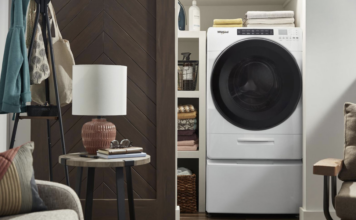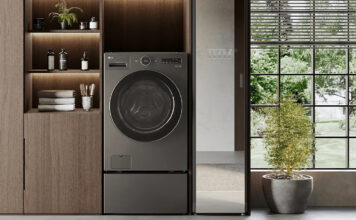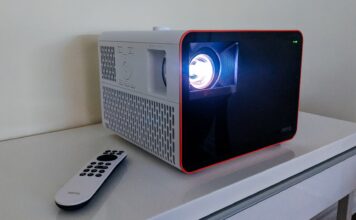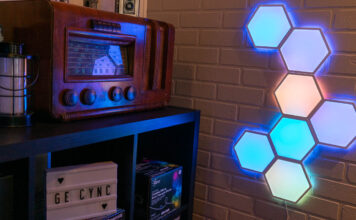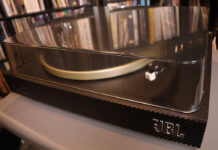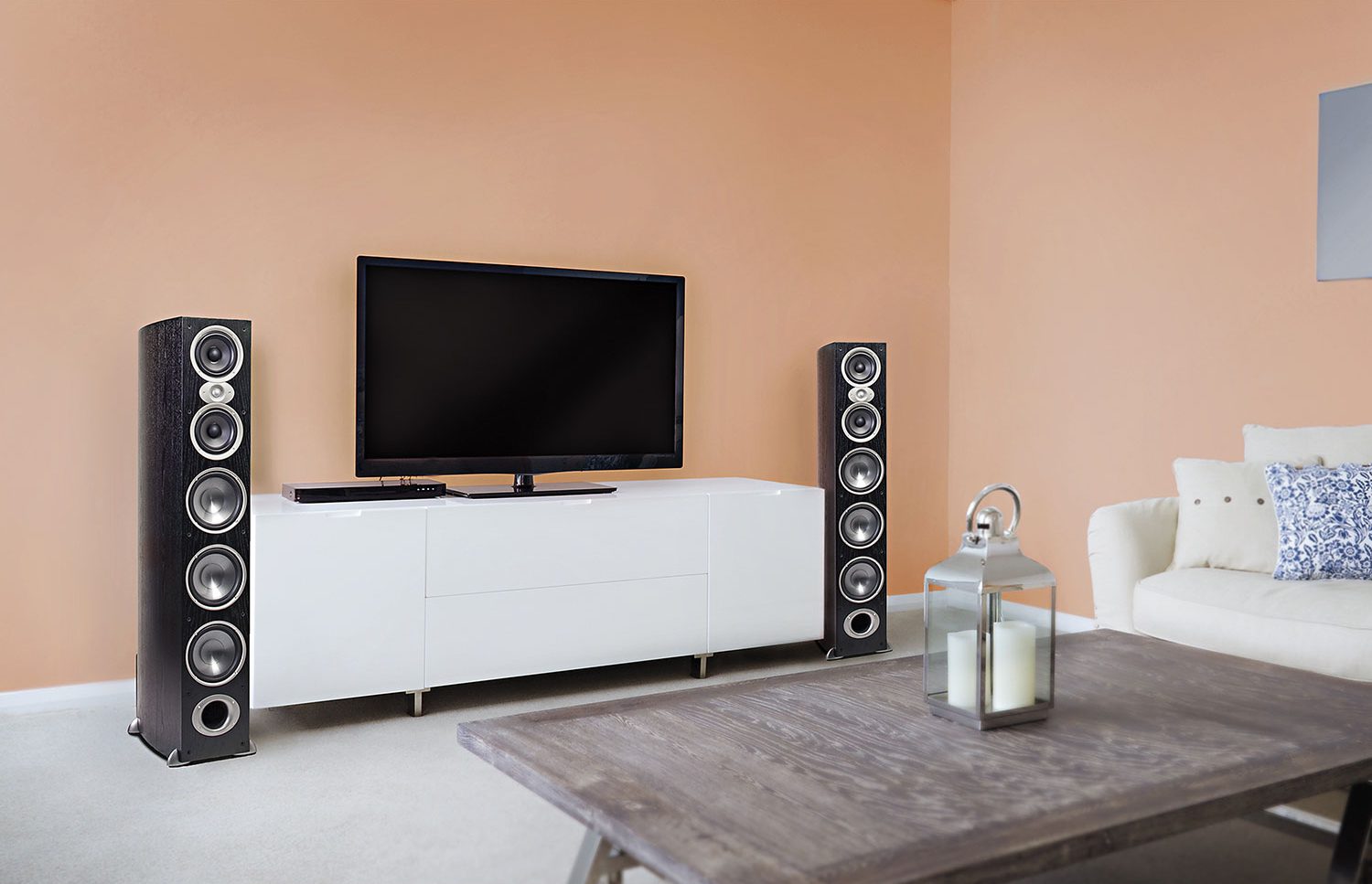
In my last how-to for Best Buy Canada’s Home Theatre month, we walked you through the most important buying decisions that you’ll need to make when positioning and setting up your television. In this follow-up article, we will provide you with a similar framework. Namely: what are the most important considerations to ponder when selecting and positioning your new sound system.
Before buying a new home theatre audio solution to accompany your brand-new TV, this how-to guide will go over the questions to ask as you select your sound system. These questions are: where you should place your audio system, should you go wired or wireless and which audio system is best for you. These alternatives include soundbars, surround sound systems, Dolby Atmos systems and more customized solutions like in-wall/in-ceiling speaker options.
Where to put the TV for best audio
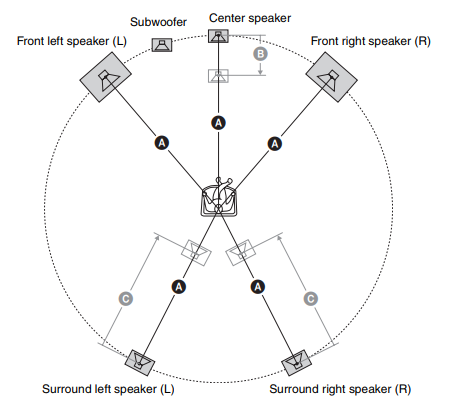
Before you travel to your local Best Buy store, take a good hard look at your entertainment room. It’s very important that you plot out where your television and audio system will be placed.
Using a soundbar (more on that later) is simpler, but let’s say that you’re planning to buy a 5.1 surround sound system. These systems have five speakers: a front-left, front-centre and front-right as well as surround-left and surround-right speakers in the back. Don’t forget about the subwoofer!
Every manufacturer has a slightly different recommendation for setting up a home theatre audio system but a good general rule of thumb is that your speakers should all be placed at approximately the same distance from your ideal listening position (see the image above).
Once your television is set up and you’ve found the best position for watching (which could be anywhere from 3-10 feet depending on the size and resolution of your screen), you’ll need to set up your speakers. If your room is too shallow to place your back speakers at the same distance as your front speakers, you can move those speakers forward. The centre channel can also be moved closer (if necessary). Your subwoofer can be placed anywhere in the room.
Wired vs. wireless considerations
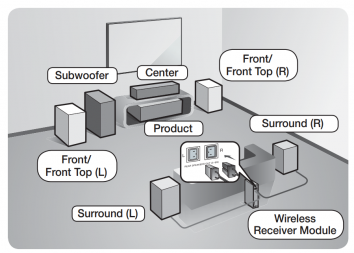
Most home theatre systems on the market today will allow you to connect your devices through Wi-Fi to stream media, but there are also a few units that cut the cord in other ways. With the scenario that I laid out above, you would have to plot out where to run your speaker cables. This is especially important for the rear channels. Will you run speaker wire under the carpet or along the edge of the room?
If you don’t want to play around with speaker wire all the way to the back of your room, a home theatre system with wireless surround speakers could be a great alternative. A system like the Samsung HW-N950 512-Watt 7.1.4 Channel Sound Bar with Wireless Subwoofer for example, comes with a wireless rear speaker kit that will allow you to do away with running wires from your receiver to the back of your room.
How to select the right audio system
Now that you have plotted out where to place your speakers, it’s time to select your system!
Sound bars
The most inexpensive way to upgrade your sound game is to bundle your new television with a sound bar. A sound bar is a self-contained device that connects to your TV very simply. These devices are usually designed to be placed on the top or bottom of the television or below the television on a home theatre storage unit. A unit like the SONOS Beam Sound Bar, for instance, can be placed on a TV stand or can be hung on the wall with the accompanying wall mount.

Sound bars are an excellent first foray into home theatre audio. They are easy to set up, provide a better sound than your television’s built-in speakers and will be the most inexpensive solution provided in this guide.
Now, if your budget and space allow, you could take a step beyond a sound bar and consider a surround sound system.
Traditional speaker systems
Called by many different names: stereo systems, surround systems or Home-Theatre-in-a-Box systems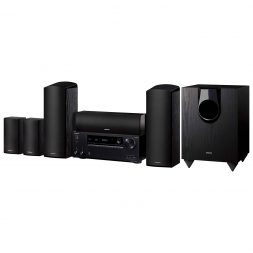 , these are the most common and cost-effective way to move one step past a soundbar to get a full-room surround sound experience. It’s incredibly convenient and more cost-conscious because everything you need is packed in one box.
, these are the most common and cost-effective way to move one step past a soundbar to get a full-room surround sound experience. It’s incredibly convenient and more cost-conscious because everything you need is packed in one box.
Take the Onkyo HT-S7800 5.1.2 Channel Dolby Atmos Home Theatre System, for example. This system comes with your receiver, speakers, subwoofer, quick start guide and some cables (this system even came with very convenient colour coded speaker wire).
Most inexpensive sound bars deliver two channel sound, but a surround sound system adds 3, 5 or more additional channels to create a more positional sound. These systems can place a rich sound in front/behind you as well as to the left and right. For even more richness, you may want to search for a receiver that also supports Dolby Atmos.

Dolby Atmos
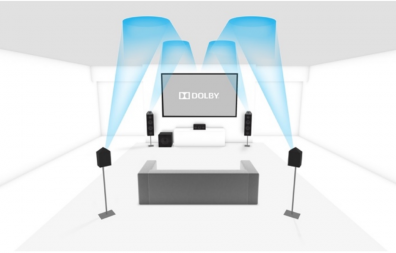
Dolby Atmos is a relatively new innovation for home theatre audio. You may have noticed that all surround sound systems are quantified with 2 numbers (like 5.1 for a 5 channel + 1 subwoofer system). Now many systems are quantified with 3 numbers (like 7.1.2). That third number represents the number of Dolby Atmos-enabled speakers that support overhead sound.
Dolby Atmos speakers change the “channel” game. Imagine an on-screen firefight in your favourite action movie. Bullets may move from rear channels to front channels or from right to left. With previous technologies from Dolby, sound moved between the individual channels in your system. But with Dolby Atmos, those same bullets can now be programmed as individual objects that move anywhere in your room. That’s because these bullets are all “sound objects” and up to 128 of them can move independently throughout your viewing area, including overhead.
It’s a great innovation that’s easier to wrap your head (literally) in person. Test it out at your local Best Buy store!
In-wall, in-ceiling speakers and more
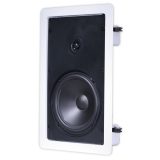 Beyond the wireless speaker option that we went through earlier, there are also options for in-ceiling and in-wall speakers as well. These “concealed” systems are the most complex and typically need a lot of advance planning. If you are interested in learning more about these devices, a Geek Squad consultation may be a great place to start.
Beyond the wireless speaker option that we went through earlier, there are also options for in-ceiling and in-wall speakers as well. These “concealed” systems are the most complex and typically need a lot of advance planning. If you are interested in learning more about these devices, a Geek Squad consultation may be a great place to start.
Some final sound system considerations
Take some time to think about your budget and space before you buy. Thinking about these two variables will lead you the right solution for you. If you’re new to home theatre audio with a small space and budget – a soundbar will probably be your best bet. But as space and budget increase, so do your options from surround sound with Dolby Atmos all the way to more customized solutions with in-ceiling/in-wall speakers or wireless surround speakers and/or subwoofer(s).
Once you have thought about your needs, the Best Buy Canada Blog has tons of guides and how-to articles that can guide you through the buying process from store to couch seat.

